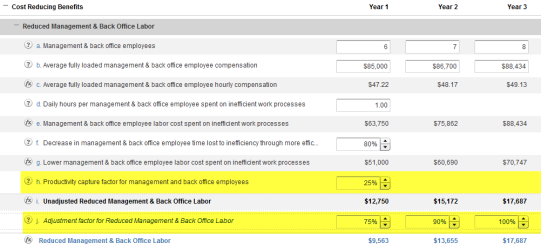Quite often sales and marketing professionals seek a TCO analysis to help grow sales when an ROI calculation would actually be a better choice. Many people assume they need a TCO analysis to close deals, when an ROI analysis would actually be far more beneficial. I know this because I get frequent requests to create TCO tools, and my first question is “What problem are you trying to solve?”
Subscribe to the Value Selling Blog
DISPLAY POSTS BY
Topics
- Assessment Tools 6
- B2B Selling 72
- Business Case 17
- Demand Generation Solutions 3
- Market Strategy 12
- Marketing 8
- Objection Handling 28
- Product Management 3
- ROI Tools 34
- Sales Enablement Solutions 9
- Sales Strategy 33
- Success Stories 6
- TCO Tools 12
- Trade Shows 3
- Value Calculators 18
- Value Pricing 21
- Value Proposition 36
- Value Selling 54
Most Popular
- All Post
- Assessment Tools
- B2B Selling
- Business Case
- Demand Generation Solutions
- Market Strategy
- Marketing
- Objection Handling
- Product Management
- ROI Tools
- Sales Enablement Solutions
- Sales Strategy
- Success Stories
- TCO Tools
- Trade Shows
- Value Calculators
- Value Pricing
- Value Proposition
- Value Selling
Subscribe to the Value Selling Blog
Topics
- Assessment Tools 6
- B2B Selling 72
- Business Case 17
- Demand Generation Solutions 3
- Market Strategy 12
- Marketing 8
- Objection Handling 28
- Product Management 3
- ROI Tools 34
- Sales Enablement Solutions 9
- Sales Strategy 33
- Success Stories 6
- TCO Tools 12
- Trade Shows 3
- Value Calculators 18
- Value Pricing 21
- Value Proposition 36
- Value Selling 54
Most Popular
- All Post
- Assessment Tools
- B2B Selling
- Business Case
- Demand Generation Solutions
- Market Strategy
- Marketing
- Objection Handling
- Product Management
- ROI Tools
- Sales Enablement Solutions
- Sales Strategy
- Success Stories
- TCO Tools
- Trade Shows
- Value Calculators
- Value Pricing
- Value Proposition
- Value Selling
Subscribe to the Value Selling Blog
Topics
- Assessment Tools 6
- B2B Selling 72
- Business Case 17
- Demand Generation Solutions 3
- Market Strategy 12
- Marketing 8
- Objection Handling 28
- Product Management 3
- ROI Tools 34
- Sales Enablement Solutions 9
- Sales Strategy 33
- Success Stories 6
- TCO Tools 12
- Trade Shows 3
- Value Calculators 18
- Value Pricing 21
- Value Proposition 36
- Value Selling 54
Most Popular
- All Post
- Assessment Tools
- B2B Selling
- Business Case
- Demand Generation Solutions
- Market Strategy
- Marketing
- Objection Handling
- Product Management
- ROI Tools
- Sales Enablement Solutions
- Sales Strategy
- Success Stories
- TCO Tools
- Trade Shows
- Value Calculators
- Value Pricing
- Value Proposition
- Value Selling













